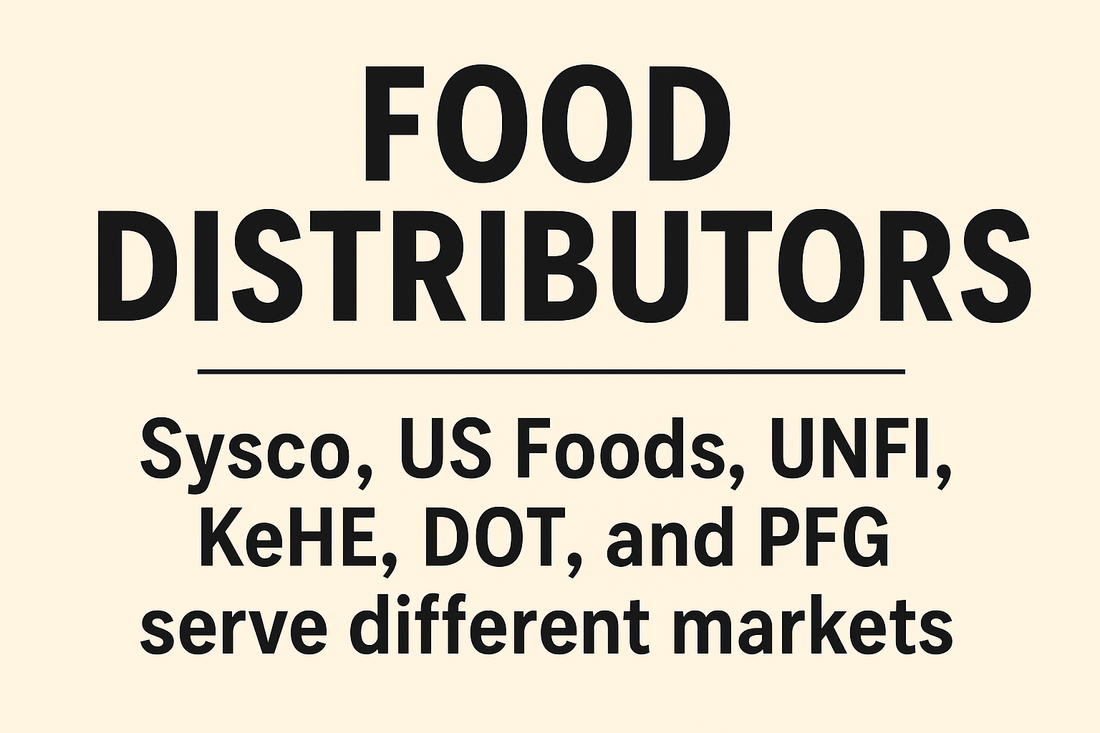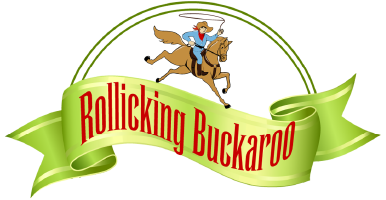
Understanding the Difference Between Foodservice Distributors: Sysco, PFG, UNFI, DOT Foods, KeHE, US Foods & More
Share
For small food brands like Rollicking Buckaroo Pepper Jam and Seasoning Blends, navigating the distribution world is one of the most important steps in growing from local to regional to national. The right distributor can open doors, while the wrong fit can slow down growth. But not all distributors operate the same way, and knowing the differences can help businesses choose the right partner.
Here’s a breakdown of some of the biggest and most influential distributors in the U.S. foodservice and retail world:
Sysco
Overview: The largest foodservice distributor in North America.
Strengths: Huge reach, with thousands of trucks on the road daily; strong with restaurants, institutions, and hospitality.
Best For: Brands looking for national foodservice exposure and the ability to scale quickly.
Challenges: Can be tough for small brands to break in without established demand or broker support.
US Foods
Overview: The second-largest foodservice distributor in the U.S.
Strengths: Strong regional and national footprint, known for innovative programs to help chefs discover new products.
Best For: Foodservice brands aiming for restaurant, catering, and institutional customers.
Challenges: Like Sysco, they often prioritize established products, though they have specialty programs for emerging brands.
UNFI (United Natural Foods, Inc.)
Overview: The leading distributor of natural, organic, and specialty products.
Strengths: Strong in grocery retail, especially chains like Whole Foods and independent natural markets.
Best For: Brands positioned in the natural/organic space, especially if looking for retail over restaurants.
Challenges: Highly competitive; shelf space in natural markets is limited and costly.
KeHE
Overview: Another major player in natural, specialty, and gourmet foods distribution.
Strengths: Great for specialty food brands with a story and unique positioning; strong in both retail chains and independents.
Best For: Premium, artisan, and specialty food products.
Challenges: Slotting fees and promotional programs can be expensive, and competition is fierce.
DOT Foods
Overview: The largest redistributor in the U.S.
Strengths: They buy from manufacturers and sell to smaller distributors who can’t meet full truckload requirements.
Best For: Brands that want to expand reach without managing dozens of small distributor accounts.
Challenges: You’ll still need demand from local and regional distributors for DOT to make sense.
Performance Food Group (PFG, sometimes referred to as "Pod")
Overview: A strong competitor to Sysco and US Foods in the foodservice space.
Strengths: Known for customer service, innovation, and regional strength in foodservice.
Best For: Emerging brands seeking foodservice penetration with strong local or regional ties.
Challenges: Competitive, and often requires proven demand before onboarding.
Choosing the Right Fit
Foodservice growth? Look at Sysco, US Foods, PFG.
Retail/natural grocery? KeHE or UNFI.
Want to reach lots of small distributors at once? DOT Foods.
Need both reach and story-telling for specialty items? KeHE is often more flexible with artisan products.
At the end of the day, distributors are gatekeepers, but they’re also partners. For small brands, success often comes from building demand first—whether through farmers’ markets, online sales, or regional retailers—before approaching the bigger players. Once chefs, retailers, and consumers are asking for your product by name, distributors will be much more eager to work with you.
👉 Tip for fellow small businesses: Don’t just chase the biggest distributor—find the one that aligns with your product type, target customer, and growth stage.
